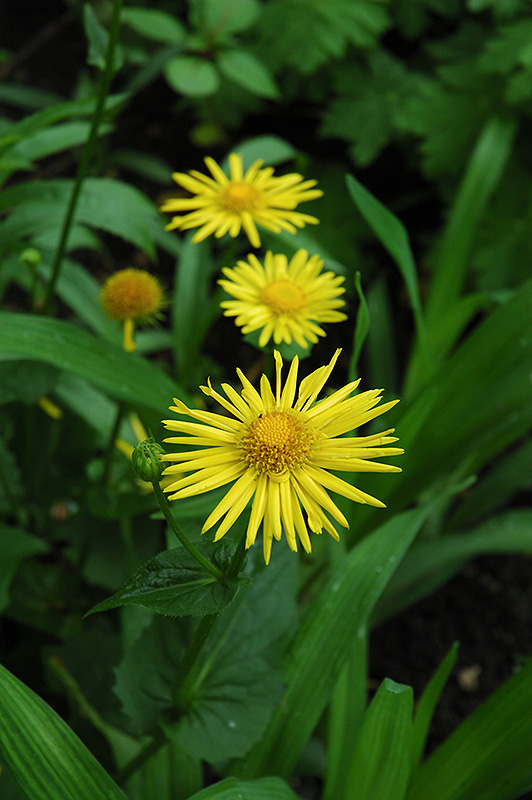Height: 18 inches
Spread: 12 inches
Sunlight:
![]()
![]()
![]()
Hardiness Zone: 2a
Description:
From sun to shade, this variety features bright lemon yellow daisy-like flowers rising above mounded green toothed foliage; blooms in the middle of spring before going summer dormant; excellent for cut-flower arrangements, borders and containers
Ornamental Features
Leopard's Bane has masses of beautiful lemon yellow daisy flowers at the ends of the stems in late spring, which are most effective when planted in groupings. The flowers are excellent for cutting. Its serrated heart-shaped leaves remain dark green in colour throughout the season.
Landscape Attributes
Leopard's Bane is an herbaceous perennial with a mounded form. Its medium texture blends into the garden, but can always be balanced by a couple of finer or coarser plants for an effective composition.
This is a relatively low maintenance plant, and should be cut back in late fall in preparation for winter. It is a good choice for attracting butterflies and hummingbirds to your yard. It has no significant negative characteristics.
Leopard's Bane is recommended for the following landscape applications;
- Mass Planting
- Rock/Alpine Gardens
- Border Edging
- General Garden Use
- Container Planting
Planting & Growing
Leopard's Bane will grow to be about 18 inches tall at maturity, with a spread of 12 inches. It grows at a medium rate, and under ideal conditions can be expected to live for approximately 10 years. As an herbaceous perennial, this plant will usually die back to the crown each winter, and will regrow from the base each spring. Be careful not to disturb the crown in late winter when it may not be readily seen! As this plant tends to go dormant in summer, it is best interplanted with late-season bloomers to hide the dying foliage.
This plant performs well in both full sun and full shade. It prefers to grow in average to moist conditions, and shouldn't be allowed to dry out. It is not particular as to soil pH, but grows best in rich soils. It is somewhat tolerant of urban pollution, and will benefit from being planted in a relatively sheltered location. Consider applying a thick mulch around the root zone over the growing season to conserve soil moisture. This species is not originally from North America. It can be propagated by division.
Leopard's Bane is a fine choice for the garden, but it is also a good selection for planting in outdoor pots and containers. It is often used as a 'filler' in the 'spiller-thriller-filler' container combination, providing a mass of flowers against which the thriller plants stand out. Note that when growing plants in outdoor containers and baskets, they may require more frequent waterings than they would in the yard or garden. Be aware that in our climate, most plants cannot be expected to survive the winter if left in containers outdoors, and this plant is no exception. Contact our experts for more information on how to protect it over the winter months.
